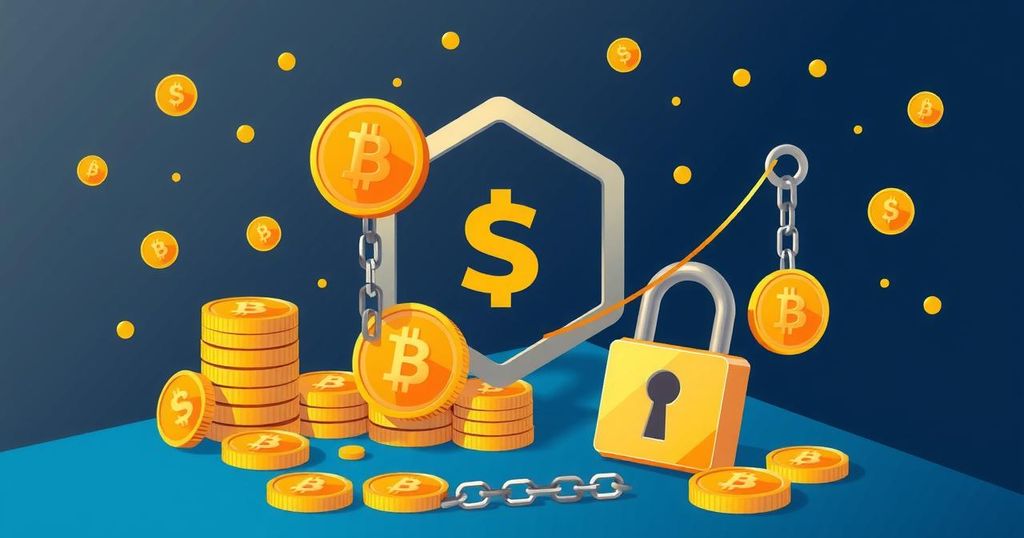Iran’s Cryptocurrency Regulation: Government Oversight in 2025
Iran’s government has enacted significant cryptocurrency regulations in early 2025 to control the market amid power outages and sanctions. The Central Bank of Iran is tasked with overseeing transactions, ensuring transparency, and preventing capital flight. Despite these measures, challenges remain, including illegal mining and economic instability. The regulatory framework aims to integrate digital assets within a state-controlled system while addressing concerns over financial transparency and illicit activities.
Iran has significantly transformed its regulatory framework for cryptocurrencies in early 2025, implementing directives aimed at supervising and controlling the crypto market. This shift responds to power outages, issues surrounding illegal Bitcoin mining, and the pressure of international sanctions. The increased oversight intends to discourage large capital movements without taxation, prompting the Central Bank of Iran (CBI) to prohibit rial payment gateways for cryptocurrency exchanges. This intervention addresses concerns over the vast, untaxed transaction volumes in an opaque trading environment.
The newly established regulations formalise the relationship between the government and cryptocurrency exchanges, mandating that crypto platforms secure direct payment gateways under a defined regulatory structure. Brokers are required to transparently conduct transactions in rials using government-approved accounts. The CBI’s regulation also extends to all participants in the cryptocurrency ecosystem, enforcing licensing and oversight responsibilities to ensure compliance.
Following widespread illegal Bitcoin mining discoveries, which contributed to significant energy shortages and economic strain, Iranian authorities have taken decisive actions. Private sector estimates place the damages from these power outages at $20 billion. While cryptocurrency mining became legal in 2018, sporadic governmental restrictions reflect ongoing tensions between energy demands and mining activities across Iran, spurring authorities to solicit public assistance against unauthorized mining.
As part of its broader economic strategy, Iran envisaged a national cryptocurrency to enhance international trade, advancing to trial phases with its Central Bank Digital Currency (CBDC) and reinitiating fiat-to-crypto operations through a government API. Despite robust trading activity, with nearly $3 billion in crypto transactions noted in 2022, the sustainability of Iran’s energy infrastructure remains a concern, compounded by rising fuel shortages and the depreciation of the rial amid inflation.
In January 2025, the government halted cryptocurrency exchange payment operations to mitigate speculation, especially concerning Tether’s role in the market. This is a response to pressures from a weakening rial, which has profoundly influenced citizens’ inclination towards digital assets as a hedge against economic instability. The CBI’s actions aim to curb excessive demand for Tether and its impact on exchange rate fluctuations.
Issues of financial transparency plague various Iranian cryptocurrency exchanges, raising concerns of tax evasion and illicit activities. Reports indicate significant discrepancies in transaction records and potential misuse of user funds. In tandem, payment facilitators have breached banking regulations, creating an environment ripe for speculation and a lack of transparency.
Moreover, Iran’s complex geopolitical landscape influences its cryptocurrency policies. The domestic situation, characterised by economic challenges and energy scarcity, pushes citizens towards digital currencies. Regional dynamics, especially collaborations with Russia on a gold-backed stablecoin, highlight potential circumventions of sanctions against Tehran.
Internationally, scrutiny from the US and European nations focuses on Iran’s cryptocurrency dealings, especially regarding potential sanction evasion. The CBI’s initiative to implement a digital currency mirrors broader global trends, although Iran’s approach primarily emphasises state control rather than promoting decentralised financial practices.
In conclusion, Iran’s strategy exemplifies a drive to adopt cryptocurrency while asserting control over its financial ecosystem. However, ongoing challenges related to energy, transparency, and underlying economic issues threaten the efficacy of these regulations. Stakeholders express concerns that the closure of exchange payment gateways may aggravate economic pressures rather than alleviate them, urging a more collaborative approach from the central bank to foster a sustainable crypto environment.




Post Comment